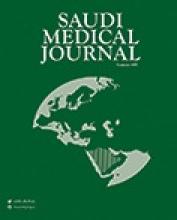To the Editor
This rare occurrence of spontaneous ileostomy closure1 is an appealing report, focusing the attention not only to this specific event, but also to the ileostomy issue, whose interest has been risen recently.2,3 Spontaneous closure, with a successful outcome in all 3 cases reported in the literature,1,4,5 may be considered a favorable evolution of an oostomy complication, namely, retraction, that occurs in 0 to 40% of cases6 and may be related to too much tension on bowel or its mesentery, due to inadequate mobilization, resulting in stoma ischemia and necrosis.7 Additionally, patient factors such as high body mass index (BMI),8 steroid use, malnutrition, diabetes and smoking have also been implicated.9 The underlying factor causing retraction is usually separation of skin from mucosa suture line, which, however, was not observed by the authors of this article. Two out of the 3 patients with spontaneous closure reported in the literature were submitted to chemotherapy and the third patient had TB treatment. May these treatments have played a role in the pathogenesis of spontaneous closure? Theoretically, a key-factor in spontaneous healing of an ileostomy could be a proper nutritional state. Especially in low-, middle-income countries (LMICs), an anabolic state of the patients after surgery is often difficult to achieve. However, 2 out of the 3 patients reporting spontaneous closure came from India.4,5 Hence, it would be interesting to know if and how the nutritional issues consequent to abdominal surgery were managed in those patients. In any case, at the moment the mechanism of a surprising and unusual event such as a spontaneous ileostomy closure is poorly understood and very likely individual bases play a role in the retraction/closure process. Technical details in performing ileostomy may not be decisive factors in retraction/spontaneous closure. In the only patient where the surgical technique was described in detail,1 the bowel wall was fixed to the fascia and skin. The use of a support rod does not significantly affect the incidence or retraction, although peristomal skin irritation seems to occur more commonly when a rod is placed.2 Most likely the real question is if a spontaneous closure may be considered a favorable event. Indeed, it has been so in the 3 reported patients. Conversely, deep retraction and malfunction of an ileostomy, leading to a revisional surgery, has been a relatively common experience in colorectal surgery. In presence of retraction, the stoma’s ability to fully divert the ileal/fecal stream may be compromised, thus challenging the protection role of oostomy. Moreover, while a well functioning distal anastomosis, with the absence of any obstacle to the passage of intestinal fluid, is obviously a key element in allowing the spontaneous closure, an even small anastomotic leakage, even without clear clinical symptoms at the beginning, may lead to unpleasant consequences if not protected.
A further drawback of spontaneous closure is the likelyhood of an incisional hernia. Approximately 30% of patients develop incisional hernia requiring repair after surgical stoma closure,10 but the risk should be much higher after spontaneous closure, where the defect of the abdominal fascia is left open. The short follow-up of the reported patients (from 4-9 months) may not allow the detection of an incisional hernia. A careful and long term follow-up should then be recommended in such patients.
In conclusion, spontaneous closure of an ileostomy, apparently quite rare and whose pathogenesis is tricky to explain, may likely be considered a favorable event for the patient, avoiding a subsequent surgical procedure, but we must be aware of the theoretical strong possibility of an incisional hernia. Moreover, the presence of any even small leak of the protected anastomosis should be absolutely excluded and other postsurgical problems such as adhesions, with consequent possible mechanical obstruction, or potential bowel strictures at the ileostomy site, should not be underestimated. Further and careful analysis of patients in a long-term bases would certainly help to clarify the unclear implications of such event.
Reply from the Author
No reply from the author
- Copyright: © Saudi Medical Journal
This is an open-access article distributed under the terms of the Creative Commons Attribution-Noncommercial-Share Alike 3.0 Unported, which permits unrestricted use, distribution, and reproduction in any medium, provided the original work is properly cited.






